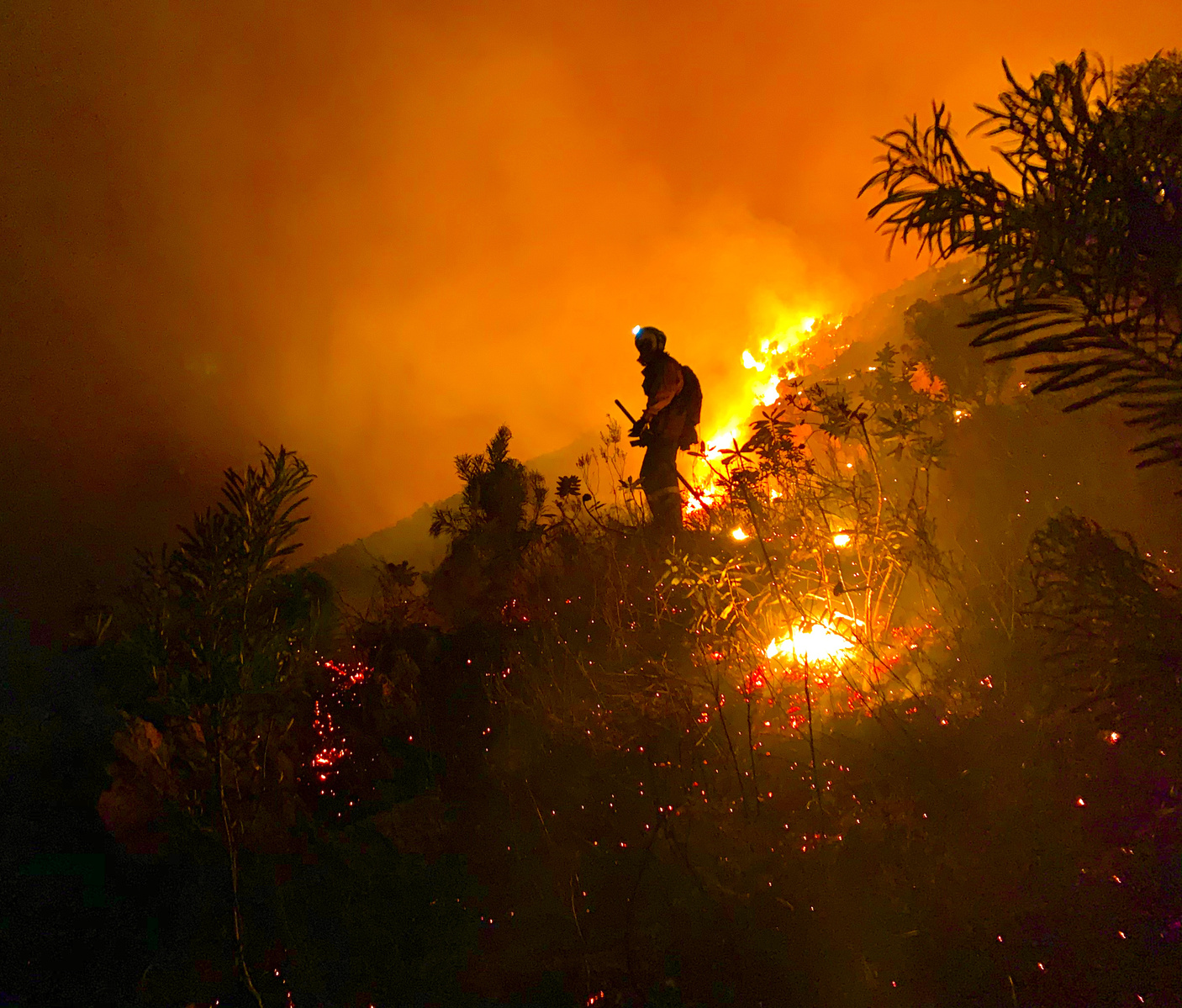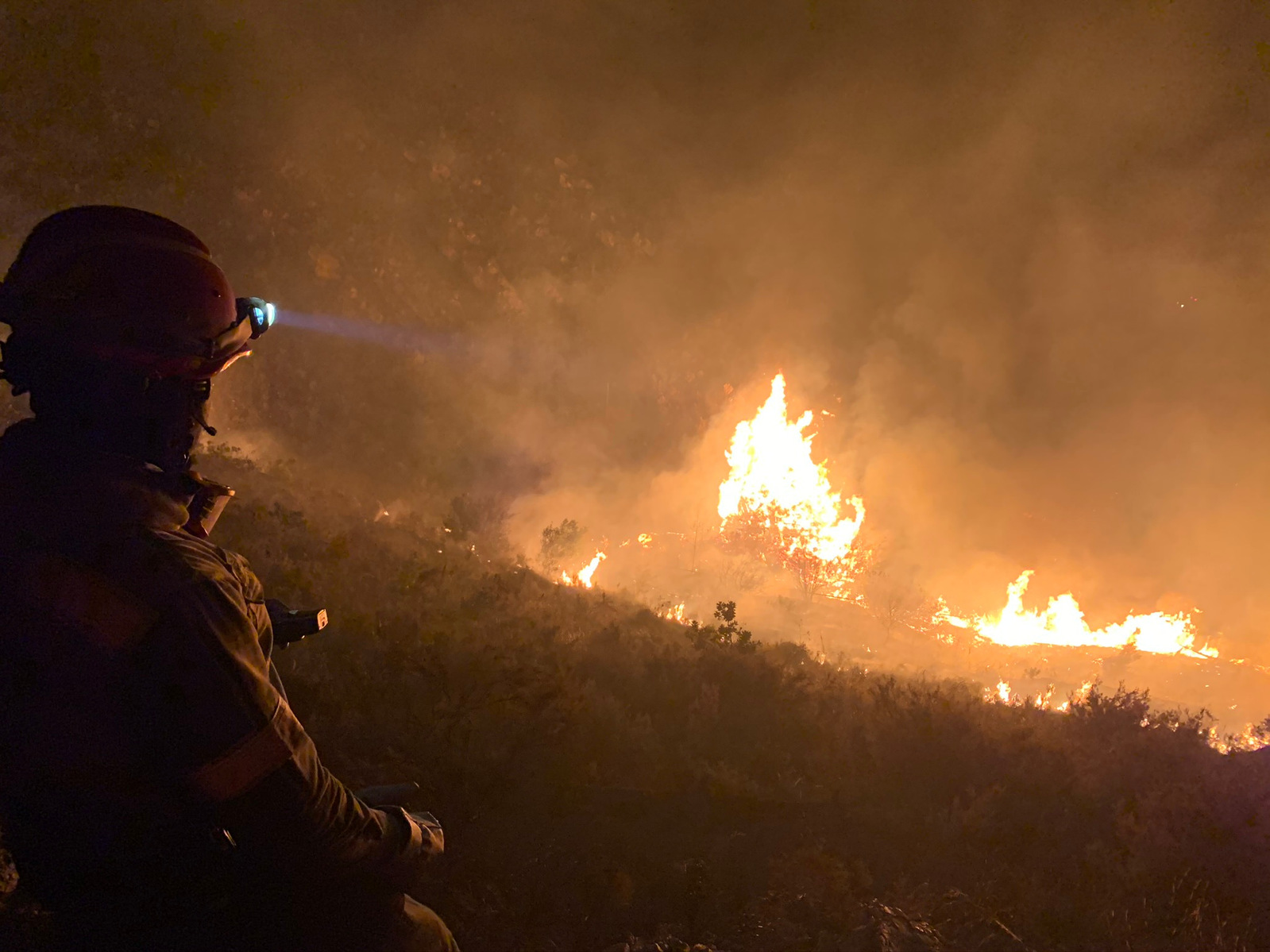
A headlamp. A pair of worn gloves. A yellow hard hat. One flash hood. A jacket for the cold night. A set of dusty goggles. A ration pack with corned beef, snacks, energy powder, and protein shake mix. Four insufficient litres of water. And tools: a beater (a broom handle with rubber strips at the end), rake-hoes (McCleods), garden hoes, and maybe, a silky saw. It is possible that a small Stihl saw will make it to the fireline as well.

These ten items encompass the complete toolkit available to an individual as they sustain themselves to engage in rigorous fire suppression for 12-36 hours. Tools will be exchanged as the fire progress, in case anyone wants to take over. Ration items will be traded, like they always are, as everyone has their preferred go-to items.
Either in the U.S or in South Africa, wildland firefighting seems to elicit certain personalities. Those that are passionate about working in dynamic environments under stressful conditions. An appreciation for unpredictability, but a need for personal and team resiliency. Often working situations far from the public eye, wildland firefighters remove the hazards of wildfire from a common social conscience. As a result of successful work, their importance and skill may be undervalued, and their support network non-existent.
South Africa, not unlike the US, champions the work of their wildland firefighters when their success is on display - following a large campaign fire, or the loss of life during an incident. Political and social narratives are slow to recognize the symbolic and literal voids that fire practitioners fill: the frictional space between a degraded or volatile environment and inwardly-focused society.
In a region of special floristic diversity, conservation receives a high priority as fire management sets objectives based upon vegetation age-class and conservation status. Non-intrusive methods of firefighting are used and ecological values are more equitable to social ones. In numerous situations, South Africa's strong environmentalism benefits wildland firefighter operations as landowners are obliged to construct firebreaks and manage fuel loads. No argument made be made for US homeowners as cultural narratives on private property prevent mechanisms for wildfire accountability.
The intrinsic skills that fire practitioners compile - understanding of fuels and fire behavior, about fire weather, risks of firefighting, and burn operations- are not often professionally recognized. South Africa is not alone in undervaluing the experiential and technical knowledge necessary to understand fire, its movements and controls. In many cases, on-the-ground experience may struggle to percolate up the chain of command, as significant support deficiencies exist. Without professional recognition of fire practitioners, the sector as a whole may struggle to adapt and manage future projections for wildfire.
Wildfire operations are indicative of the social and environmental paradigms within a nation.
For South Africa, both the nation's progressive environmentalism and historic social inequalities are apparent on the fireline.
This scenario is not endemic to South Africa, as similarities persist in other nations. A common theme throughout a tour of fire management microcosms revealed that wildland firefighters and, as a profession are largely unrecognized for the place they fill in human-environmental relations.
Holistic, proactive wildfire concerns will not be solved through an unrecognized workforce. The accumulation of fire knowledge - its ecology, behavior, management, and human dimensional challenges - is a slow process that largely occurs through experiential learning. The type of work necessary to untangle wildfire challenges draws strong, passionate personalities; however the absence of social recognition and support undermines their ability to persist in the sector. The seasonal nature of wildfires has often solicited the concept that a standing, professional workforce is not necessary. As wildfires seasons persist beyond their historical boundaries, an equally consistent body of fire professionals is necessary. These practitioners are needed to not only manage wildfires during their peaks, but to mitigate their impacts during the valleys. A long-term, strategic solution to wildfires may require a long-term, available body of career professionals.



































